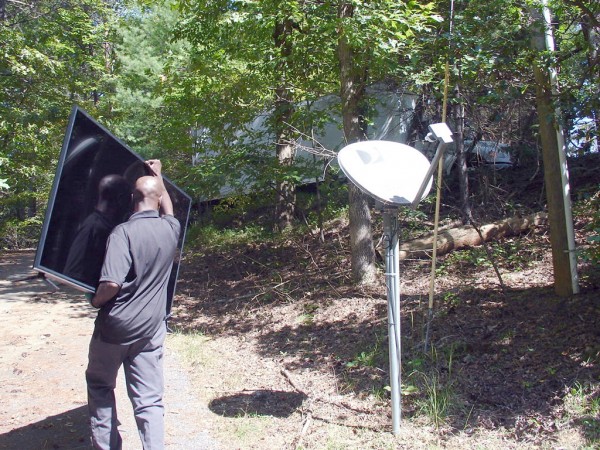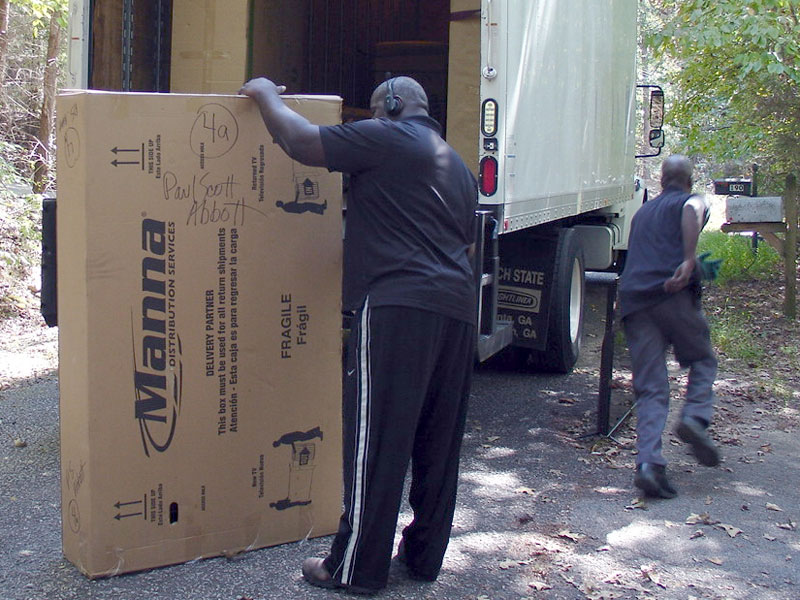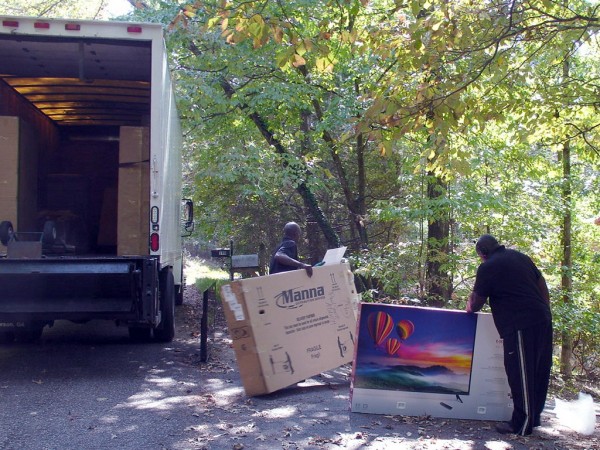Creepy-crawly TV import spurs APHIS probe, reverse logistics
Cannibal arachnids imported from Mexico, trapped within TV screens, apparently aren’t an everyday occurrence.
But, when such a creepy-crawly circumstance happens, it’s comforting to know that federal officials and electronics manufacturers alike take things seriously.
Oh, what tangled, egg-filled webs are woven inside the screens of 65-inch Vizio televisions assembled in Mexico? We may never exactly know, but we can be relatively certain they don’t constitute a widespread invasion of a nonnative species from Mexico, which, if nothing else, ought to elicit a presidential smile.
Now to try to untangle the figurative web, with the help of a veteran U.S. Department of Agriculture Animal and Plant Health Inspection Service officer, a renowned University of Georgia entomologist and representatives of manufacturer Vizio Inc., reverse logistics provider Manna Distribution Services and others.
The Halloween-y saga begins innocently enough, as a 25-year-old TV set at the

At first, when I spied creepy-crawlies flitting across the lower portion of the new TV screen, I thought I must have been hallucinating. After all, I had seen the acclaimed Tracy Letts play “Bug” in Greenwich Village in 2004, as well as the film version of that psychological horror tale, starring Ashley Judd, a couple years later.
What made the possibility of a Vizio Smart TV being literally bugged all the more fascinating was the less literal bugging of its Smart TVs, as, in November 2015, it was revealed that Vizio was collecting information on its customers and selling it to advertisers. To settle that case, in which Vizio was accused of using 11 million televisions to spy on customers, the company agreed to pay out $2.2 million.

Of course, once my wife and I realized that those were real living critters and not imaginary figments in between the layers of the display, we reached out initially to mega-retailer Best Buy Co. Inc., through which the purchase was made. Best Buy’s customer service rep gave a “new-one-on-me” and “not-our-problem” response and referred us to Vizio. (By the way, Best Buy’s public relations folks ignored repeated requests for comment.)
Thankfully, both USDA APHIS and Vizio, as well as the University of Georgia’s Department of Entomology, were more responsive.
My APHIS query was directed to Philip A. Bailey, supervisory Plant Protection and Quarantine officer in the Conyers, Georgia, office of the USDA unit. After reviewing photos and talking with a Vizio representative, Bailey ultimately determined the critters not to be of an invasive species and thus not arthropods of interest to the federal agency.
“Insects found in electronics is a first for me,” Bailey said, noting that he has worked for APHIS for 33 years, the last 16 years in Georgia.
Vizio, in turn, moved swiftly to secure customer satisfaction. Maynard Brooks, a corporate escalation manager with Vizio’s Dakota Dunes, South Dakota-based executive resolutions team, said his Irvine, California-headquartered company sells about 70 million TVs a year and dubbed this “a unique circumstance” not typically covered under manufacturer’s warranty. But he nonetheless promised a swap-out.

Vizio’s official comment, coming via Jim Noyd, principal of Noyd Communications Inc., Vizio’s Manhattan Beach, California, public relations agency was that “this appears to be a rare and isolated incident.”
“Vizio is not aware of any other cases concerning this matter and has no reason to believe Vizio TVs are a typical carrier for insects,” Noyd said.
While Best Buy failed to respond, an industrywide spokesman, Tyler Suiters, vice president of communications for the Consumer Technology Association, the Arlington, Virginia-based trade association formerly known as the Consumer Electronics Association, said it was the first such incidence of which he has heard.
That said, web searches using terms such as “spider in TV screen” do show that others have encountered similar issues, including postings from Jan. 9, 2018, and Feb. 4, 2018, involving 65-inch Vizio units. The first of those posters talks about physically dissembling the TV and removing a spider with “twizzers.”
So maybe “unique” isn’t exactly the right word to use.

Anyway, Vizio’s Brooks advised that any attempt to remove insects from within the unit would void the warranty and preclude the possibility of replacement, so I turned to University of Georgia entomologists, providing photos. After all, as a writer for nearly a half century, I know far more about etymology than entomology.
Enter UGA entomology professor Dr. Joe McHugh, who happens to be curator for the Peach State’s collection of arthropods. After reviewing several photos, McHugh opined that the creepy-crawlies were likely spiders, a type of arachnid, and technically neither insects nor bugs.
McHugh explained that, even in hospital settings, it is impossible to achieve perfect sterilization, so it is quite possible that a spider got into the set during assembly in Mexico (the source nation listed on the TV’s back panel) and somewhere along the line laid an egg mass in a nice dark corner of the unit. Hatching may have been hastened by heat within the set, but the good news, according to McHugh, is that, after hatching out and finding no external food source, the spiders would probably cannibalize each other until running out of resources to keep them alive. Perhaps the hearty spider that inconveniently died to the right of center of the screen wandered too far in its search for nourishment.

At any rate, 11 days after the initial call back from Brooks, following a series of phone calls and emails, two subcontracted workers from Pilot Freight Services subsidiary Manna Distribution Services showed up with a generic white truck during a prescheduled delivery window. They took the arachnid-infested set from the house and delivered in its place an apparently spider-free 65-inch Vizio that had been shipped to Georgia from a warehouse in City of Industry, California. It’s now been more than three weeks with no signs of spiderlings.
Even now, the web hasn’t entirely untangled, leaving us still scratching for answers.
No one from Pilot/Manna or Vizio could say exactly where the infested set has wound up, and I admit to having no doubt been truly hallucinating when I thought I saw it down the road at a spot where everyone ignores the “no dumping” sign.
Also a lingering mystery: How exactly did a pregnant spider get into the set? Was the culprit a disgruntled Mexican assembly line worker?
Happy Halloween!
© Copyright 1999–2024 American Journal of Transportation. All Rights Reserved


